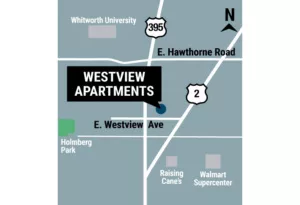
Minimize operating cycle, free up cash for growth
Strategy should include maximizing efficiency

Imagine this: Your business is thriving in Spokane. Demand is growing. Orders are pouring in, you’re spending aggressively to fill them. Sounds great, right? Then why do so many Spokane businesses in this position suddenly find that, though they look profitable on paper, they’ve run out of cash?
This can happen when a business expands so quickly that the work takes a backseat to careful planning. But it doesn’t have to happen to you when your business grows.
Calculating your company’s operating cycle—the period of time between your initial cash outlay and receipt of payments—may help you understand why you can become cash-strapped during a period of intense growth. The real magic comes when you work to modify this number by pursuing more favorable terms as a buyer, seller, and business partner. Here are some insights on how to go about that.
Get internal partners on board
Growing a business the right way is not only about growing revenue, but also about maximizing the efficiency of your business.
To ensure this efficiency sticks, it’s important that management understands the importance of optimizing your cash cycle. You may discuss with your internal partners:
•The value of integrating financial projections—The successes or shortcomings of cash flow statements and profit-and-loss statements are inherently linked, but it can be easy to overlook how one impacts the other. Make an effort to review these items as one, so everyone understands cash flow’s impact on the bottom line.
•Automating and outsourcing processes—If the invoicing process is conducted manually, it may be taking up valuable employee hours and slowing down the cash cycle. Outsourcing payroll may also be a key step to shrinking the operating cycle for expanding businesses.
•Protocol for bridging cash flow gaps—When cash is needed for a business transaction, where do the funds come from? In addition to benefiting the cash cycle, implementing a clear protocol for how each department manages cash may make it easier for employees to fulfill their duties.
Revisit vendor relationships
Your operating cycle is also largely impacted by your vendors’ and customers’ payment policies. You can pursue multiple strategies with these partners to shrink the cycle. Try to slow down the flow of cash leaving your business and accelerate the pace at which you get paid.
Your vendors may be especially willing to offer more flexible terms because, as your business is growing, you’re becoming an increasingly important part of their own balance sheet. You may discuss the timing of payments with your vendors. It’s worth attempting to negotiate payment dates with vendors, such as checking with the vendors that have 30-day terms but perhaps are open to 60-day terms.
You can also ask your vendors about a trade discount—a deduction from the list price of goods agreed upon by both parties. If you don’t have the cash on hand to cover a year’s worth of costs, consider using a line of credit to help cover these expenses. For instance, if a trade agreement gives you a 30% discount over the course of the year and your line of credit has an interest rate of 10%, you still come out ahead in terms of cash flow.
Encourage customers to pay quicker
Loyal customers may be willing to adapt to different payment terms, especially if it benefits them in some way.
One approach to consider is discounts for quick payment. If you want to get paid more quickly, one option is to go to your customers and negotiate them paying you sooner. You could make them an offer in exchange for faster payment.
Another approach is accepting debit and credit cards. Retailers may also consider easing customer payments by accepting debit and credit cards. If needed, this is another area where a line of credit may be useful for reducing cash flow gaps.
Of course, your bank always remains a valuable resource. You can use credit facilities to bridge big orders or navigate seasonal fluctuations in your business.
But ultimately, you’ll want to grind your operating cycle down to the shortest duration possible, and you may find that in doing so, you’ve improved your company’s health as much as a spike in revenue would.


